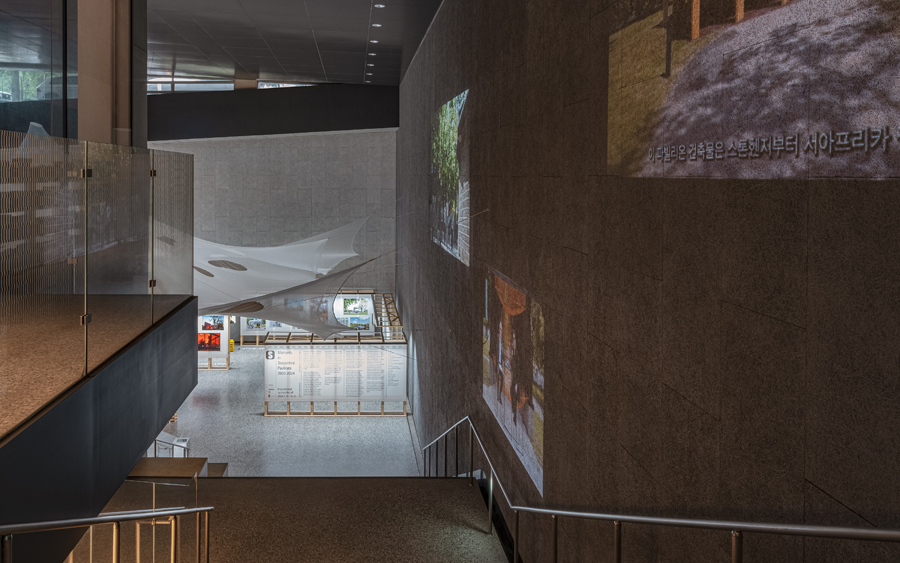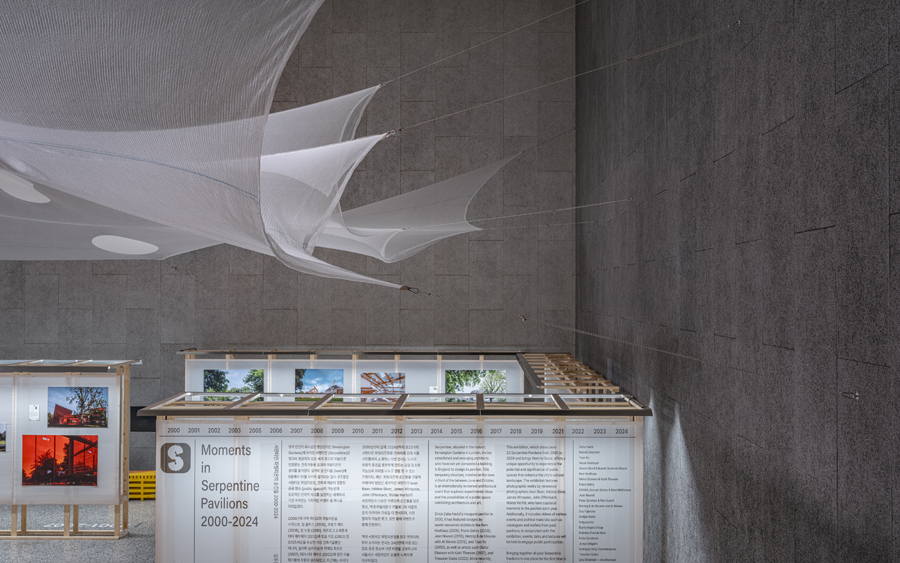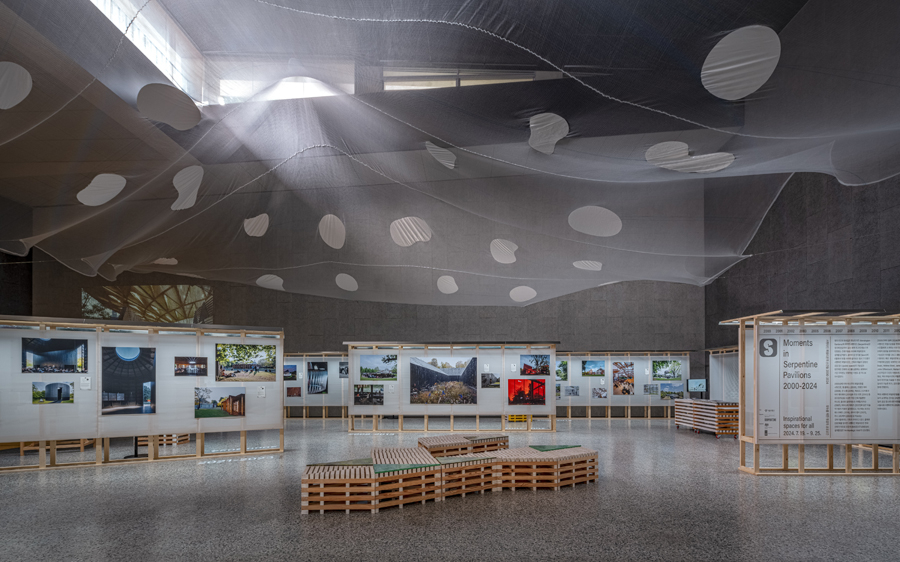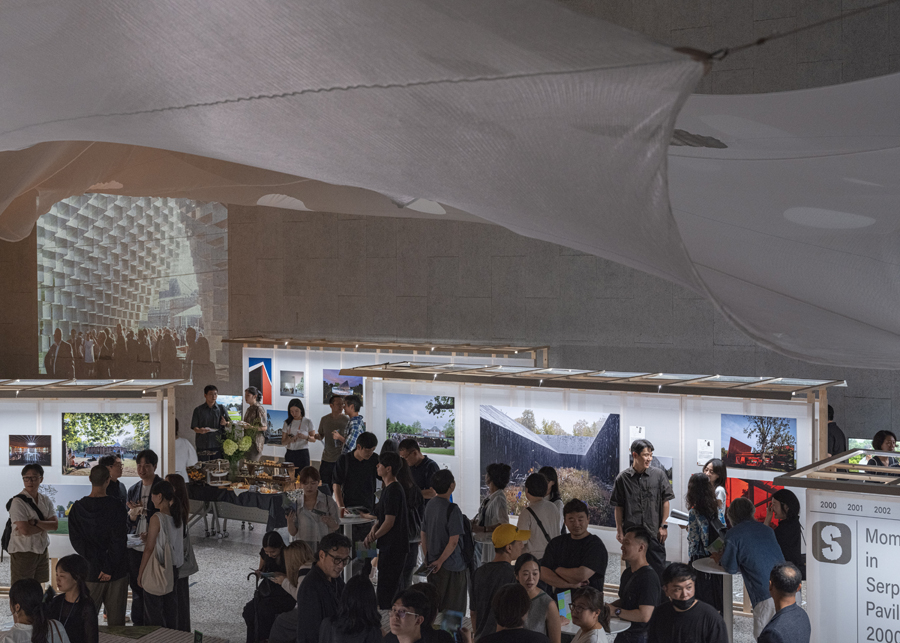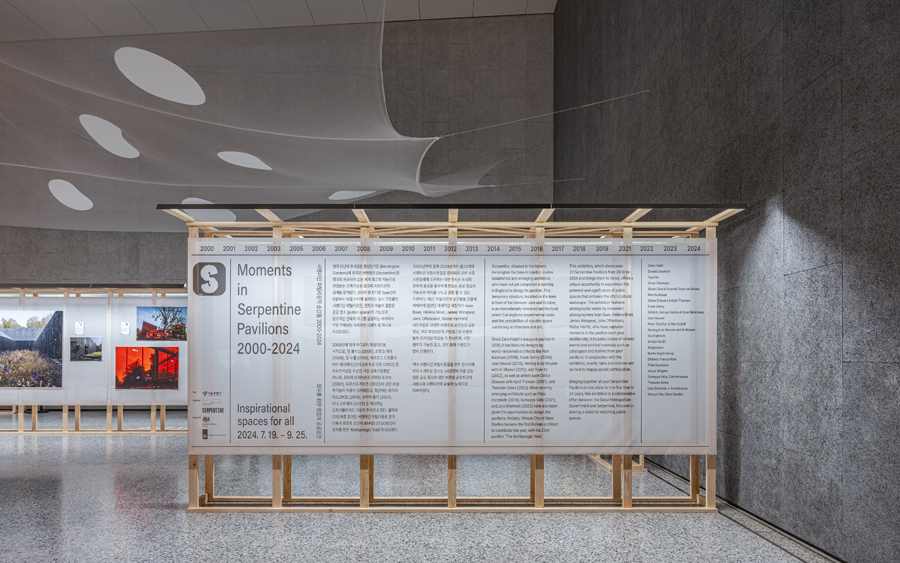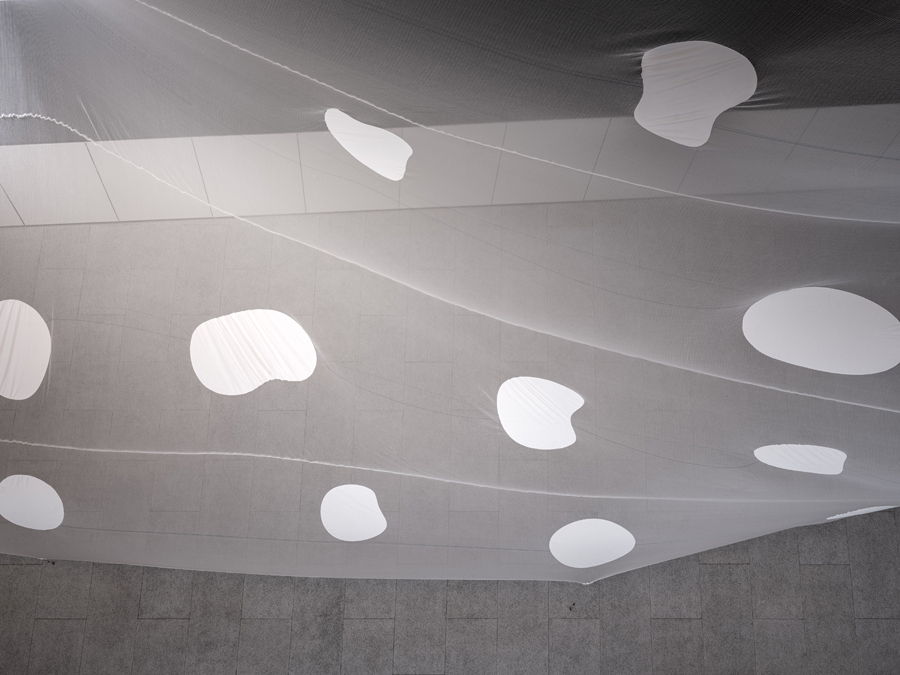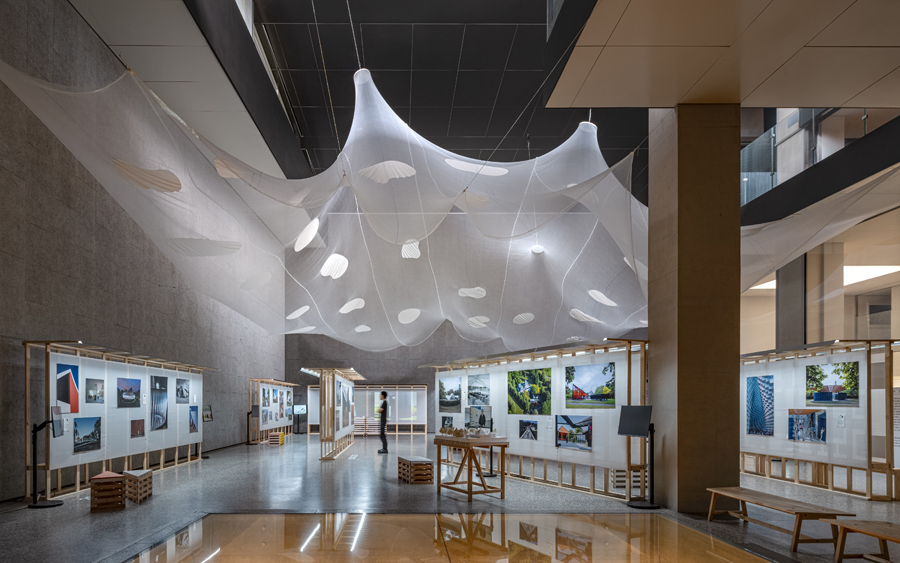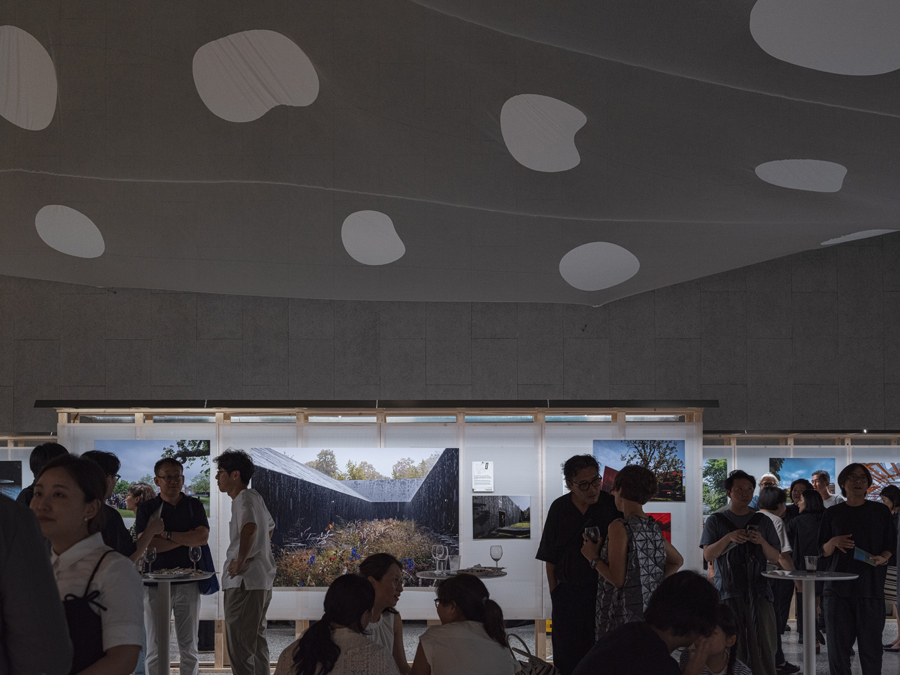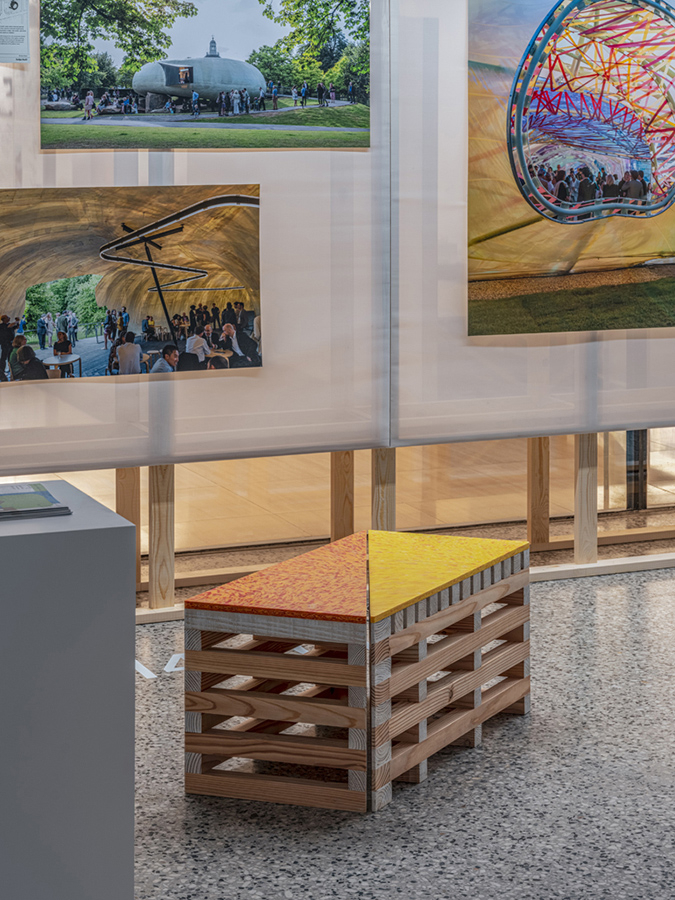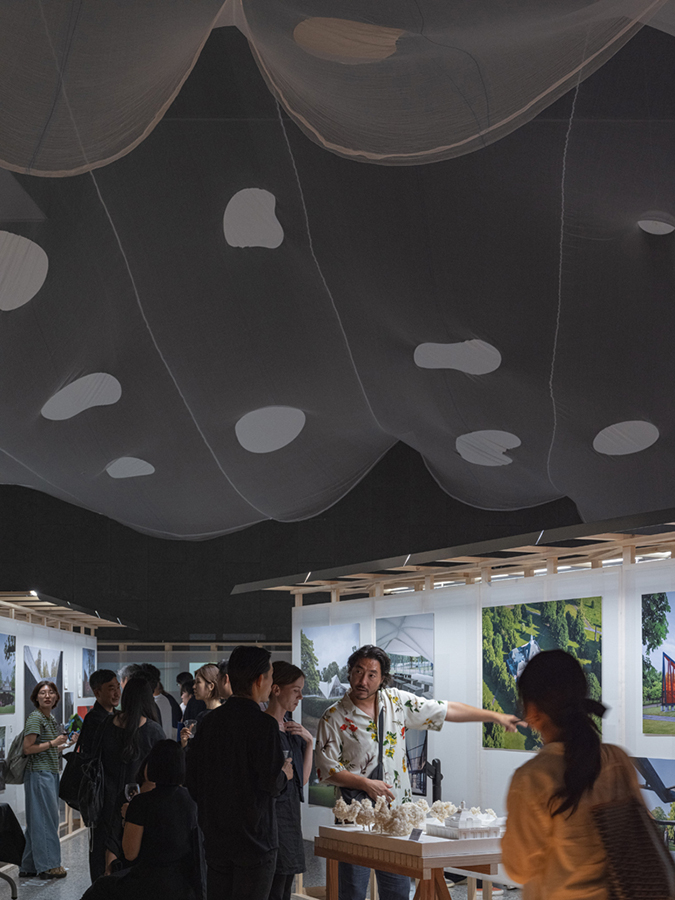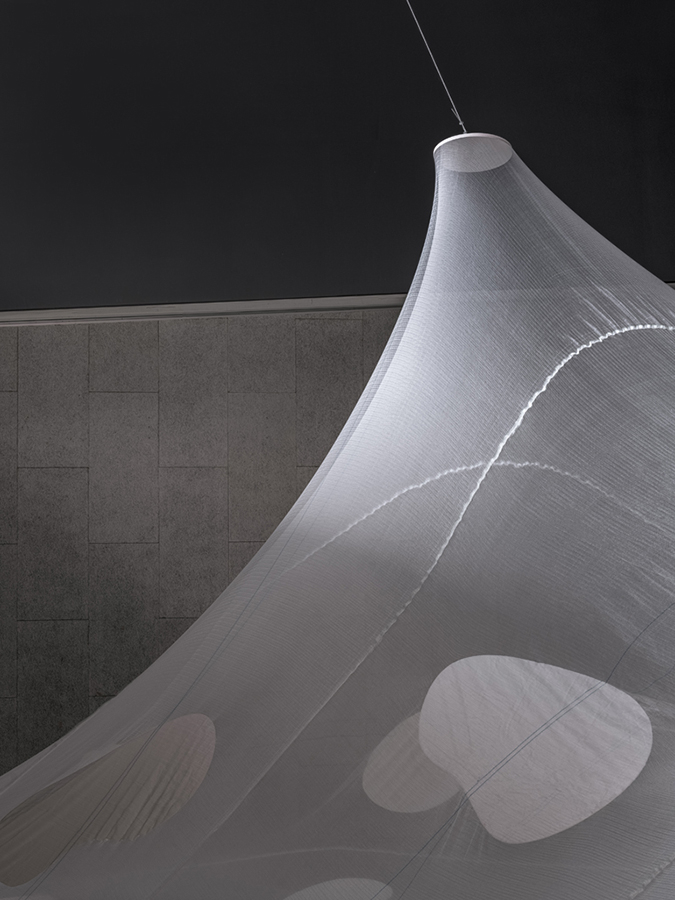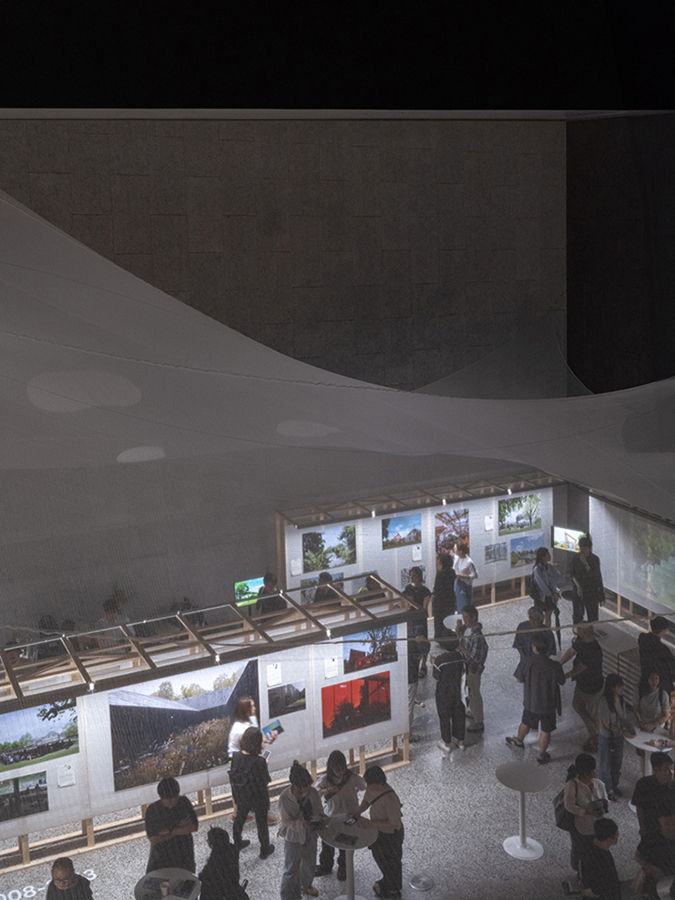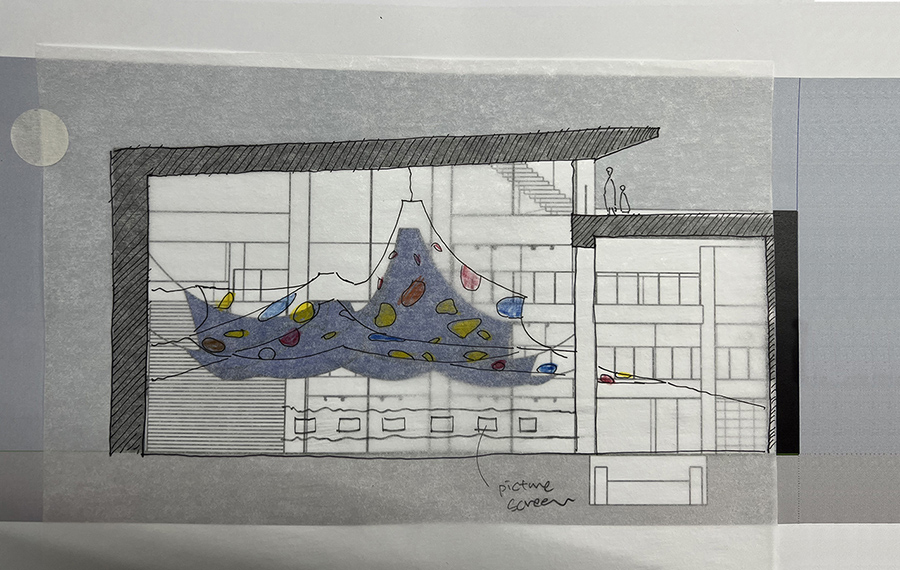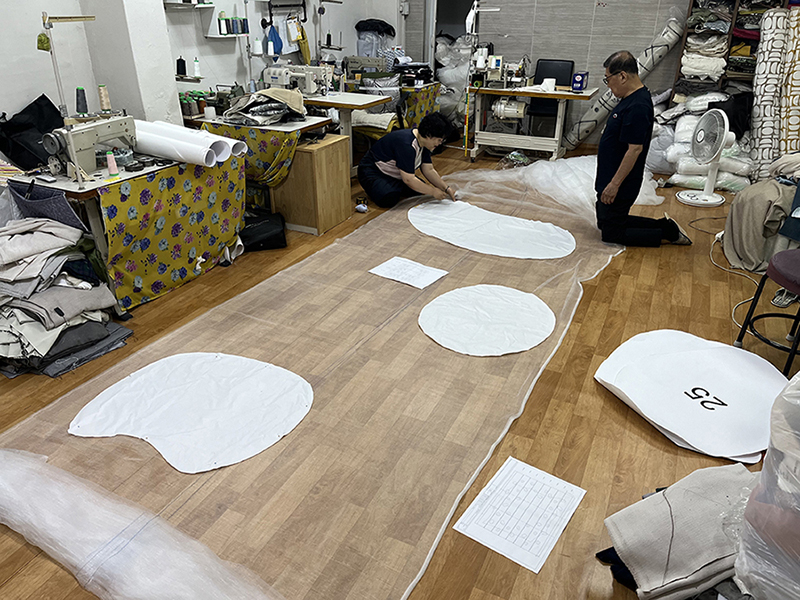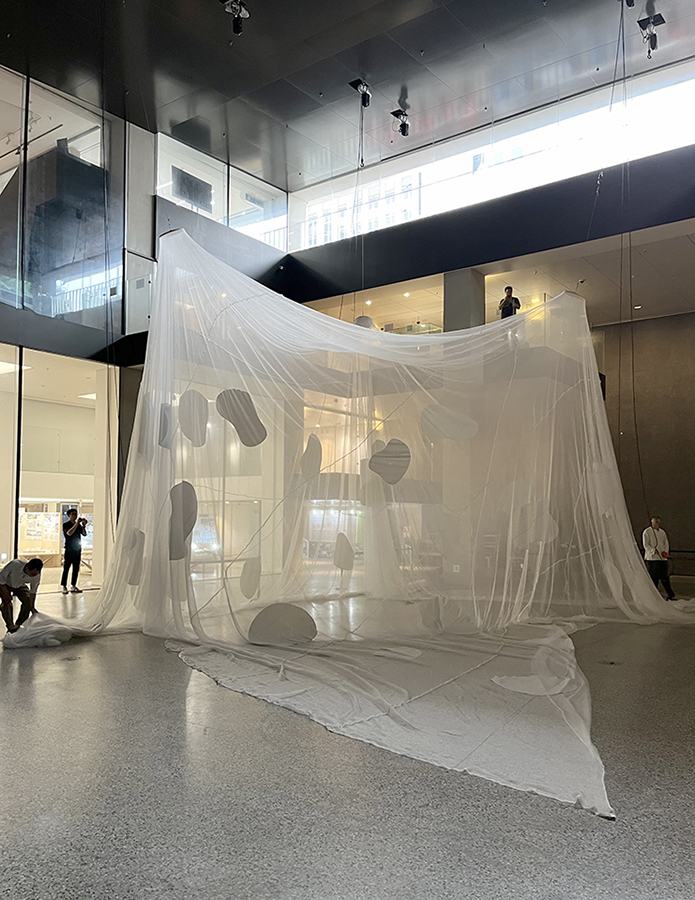Moments in Serpentine pavilions 2000-2024 / Inspirational spaces for all
서펜타인 파빌리온의 순간들: 2000-2024 / 모두를 위한 영감의 공공공간, 2024
도시안의 천막
특별한 이벤트를 위해 임시로 설치하는 파빌리온의 근원, 원초적인 형태를 따라 올라가면 천막(Mar quee)이 있다.
간편하게 설치 가능한 천막은 기능적으로 유용한 공간을 제공했을 뿐만 아니라, 다양한 색과 뾰족하고 부드러운
맴브레인의 곡선과 가벼운 임시 구조체가 기존 도시풍경과 대비를 이루면서 색다른 도시풍경을 경험하게 했다. 이런
임시적으로 만들어진 색다른 풍경은 새로운 이벤트에 대한 도시 공동체가 가지는 일종의 유대감, 기대감의 정서적
상징이기도 했으며 지난 25년간 서펜타인 파빌리온이 보여준 사회 문화적 풍경들도 이에 기반한다. 실제로 2000년
자하 하디드가 설계한 첫번째 서펜타인 파빌리온도 자선행사를 위한 가벼운 임시 천막구조였다.
장소 특정적 전시공간
서울 도시건축전시관 비움홀에는 가벼운 농업용 패브릭으로 만들어진 커다란 천막이 섰다. 서펜타인의 역사를
상징하는 솔리드 패치가 붙어있는 천막은 전시관 상부 측창을 통해 전해지는 자연광을 분산시키면서, 외부 도시공간의
시간 흐름을 지하의 비움홀 내부로 전달한다.
서울도시건축전시관은 세종대로 보행가로의 흐름이 자연스럽게 내부로 흘러드는 도시의 광장으로 계획되었다.
비움홀에 설치된 가벼운 천막은 마치 도시의 중심 광장에 임시 행사를 위해 설치하던 천막을 은유하며, 세종대로의
보행가로를 따라 내부로 들어온 방문자들이 이 천막 아래에서 내부에 만들어진 도시광장이라는 이 공간의 원래 의도를
다시 읽고 경험하기를 기대한다.
지속가능한 임시전시
6월 초에 런던에서 서펜타인 갤러리의 한스 울리히 오브리스트(Hans Ulrich Obrist)와 나눈 대화는 전시설계의
방향을 결정하는 데 중요한 역할을 했다. 지속가능성을 고려해 서울에서 지역적으로 생산 가능한 전시 컨텐츠만을
전시하기를 바랬다. 디지털사진, 영상자료들은 서울에서 다시 출력되고 자막 작업을 거쳐 전시되었다. 사진 전시를
위한 전시벽은 가벼운 패브릭 패널이 현장에서 제작되어 사용되었으며, 서울도시건축전시관에서 추후 전시를 위해서도
재활용 될 예정이다. 자석을 이용해 대형 사진을 패브릭 패널에 고정했으며 이 또한 기존의 지극히 일시적이며
소모적으로 사용되는 전시공간의 가벽(화이트월)에 대한 지속 가능한 대안이다. 또한 전시장에 놓여진 벤치와 가구들은
산림협동조합의 목재창고에 오랫동안 쌓여 있었던 사용되지 않던 목재들이 다시 활용되었다.
사진 작업의 전시
이완 반(Iwan Baan)이 2006년부터 2024년까지의 연속적으로 작업한 파빌리온 사진 작업들 중 소개되지 않은 특별한
순간들이 선별되었다. 2000, 2001년 첫 서펜타인 파빌리온의 시작을 사진으로 담았던 헬렌 비넷(Hélène Binet)의
작업과 James Winspear, John Offenbach, Walter Herfst의 사진작업이 소개된다. Julia Peyton-Jones 디렉터의
회고 인터뷰가 Dezeen의 도움으로 소개되고, 파빌리온 설계 건축가들의 인터뷰와 다양한 이벤트의 순간들을 보여주는
영상들, 매년 제작된 파빌리온 카탈로그와 리플렛 등이 소개 된다. 한국의 그래픽 디자이너 유나킴씨가 전시 관련
그래픽을 총괄해 디자인했다.
A marquee in the city
The origin of the pavilion, temporarily installed for special events, follows its primitive form, culminating
in a marquee. Easily deployable, these marquees not only provided functionally useful spaces but
also offered a different urban landscape with their various colors and the gentle, pointed curves of
the membrane. These light temporary structures created a distinct contrast with the existing urban
scenery, allowing for a unique urban experience. Such temporary landscapes symbolized a sense of
community and anticipation for upcoming events, which has been the f oundation for the social and
cultural landscapes exhibited by the Serpentine Pavilion over the last 25 years. It is notable that the first
Serpentine Pavilion designed by Zaha Hadid in 2000 was a lightweight temporary marquee structure for
charity events.
Site-specific exhibition space
A large marquee made of lightweight agricultural fabric stands in the VIUM Hall of the Seoul Hall of Urbanism &
Architecture. Adorned with solid patches symbolizing the history of the Serpentine, the marquee disperses
natural light through skylights in the exhibition hall’s upper sections, conveying the passage of time from the
external urban space into the interior VIUM Hall.
The Seoul Urban Architecture Exhibition Hall is designed as a plaza where the flow of pedestrians along
Sejong-daero naturally transitions into its interior. The lightweight marquee installed in the VIUM Hall
metaphorically evokes temporary event marquees set up in the heart of urban squares. Visitors entering
along Sejong-daero are expected to rediscover and experience the original intent of this space as an urban
plaza created within the marquee’s shelter.
A sustainable temporary exhibition
In early June, a conversation with Hans Ulrich Obrist at the Serpentine Galler y in London played a
crucial role in determining the direction of the exhibition design. With a f ocus on sustainability, the aim
was to exhibit only locally producible content in Seoul. Digital photographs and video materials were
reprinted and subtitled locally in Seoul. Lightweight fabric panels were custom-made on-site for the photo
exhibition walls, intended for reuse in future exhibitions at the Seoul Urban Architecture Exhibition Hall,
offering a sustainable alternative to traditional, temporary, and consumable white walls typically used
in exhibition spaces. Additionally, benches and furniture placed in the exhibition hall wer e crafted from
previously unused timber stored in a forestry cooperative warehouse, promoting the reuse of materials.
Photographs exhibition
The exhibition features photographic works of pavilions by Iwan Baan from 2006 to 2024, highlighting special
moments not previously showcased. It includes works by Hélène Binet, capturing the inception of the first
Serpentine Pavilion in 2000 and 2001, as well as photographs by James Winspear, John Offenbach, and Walter
Herfst. A retrospective interview with Julia Peyton-Jones is featured with the assistance of Dezeen, along with
interviews of pavilion designers and videos depicting various events. Each year’s pavilion catalog and leaflets
are also presented. Korean graphic designer YUNAKIMC is in charge of the exhibition-related graphics design.

